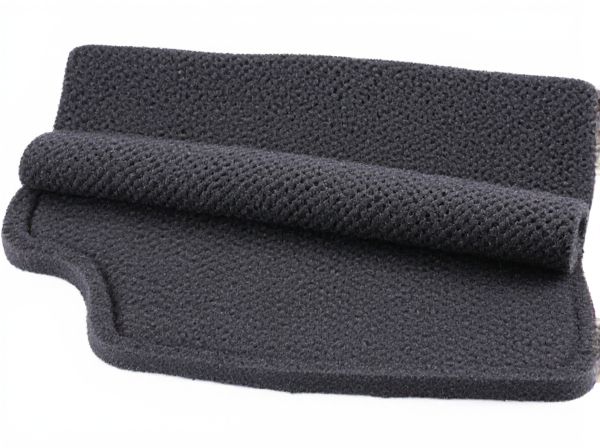
Photo illustration: Closed Cell Foam Padding vs Open Cell Foam Padding
Closed cell foam padding offers superior insulation, water resistance, and durability, making it ideal for outdoor or high-moisture applications. Open cell foam padding provides better breathability and flexibility, which enhances comfort in seating and sound absorption. Choose the foam type based on your specific needs for firmness, moisture exposure, and thermal insulation.
Table of Comparison
| Feature | Closed Cell Foam Padding | Open Cell Foam Padding |
|---|---|---|
| Structure | Dense, airtight cells | Porous, interconnected cells |
| Moisture Resistance | High resistance, waterproof | Absorbs moisture, less resistant |
| Durability | Long-lasting, retains shape | Less durable, compresses over time |
| Sound Insulation | Moderate sound dampening | Excellent sound absorption |
| Comfort | Firm cushioning | Softer, more pliable feel |
| Cost | Generally higher price | More affordable option |
| Ideal Use in Car Carpets | Best for moisture-prone areas and durability | Best for enhanced comfort and sound absorption inside the cabin |
Introduction to Foam Padding Types
Closed cell foam padding features tightly packed cells that provide superior water resistance, higher density, and enhanced insulation, making it ideal for outdoor and high-impact applications. Open cell foam padding has interconnected, air-filled cells that offer increased softness, flexibility, and breathability, commonly used in cushioning and soundproofing. Understanding the structural differences between closed and open cell foam helps in selecting the appropriate material based on durability, comfort, and environmental exposure requirements.
What Is Closed Cell Foam Padding?
Closed cell foam padding consists of tightly packed cells that form a dense, rigid structure, making it highly resistant to water, air, and moisture. This foam type provides superior insulation, high durability, and excellent shock absorption, ideal for outdoor, marine, and high-impact applications. Its impermeable nature prevents mold and mildew growth, offering long-term performance in harsh environments.
What Is Open Cell Foam Padding?
Open cell foam padding consists of interconnected cells that allow air to flow freely, making it lightweight and flexible with excellent sound absorption and breathability. This type of foam typically has a lower density, around 0.5 to 1.0 pounds per cubic foot, providing a softer cushion ideal for applications such as upholstery, acoustic insulation, and packaging. Its open-cell structure offers superior compression and conforms closely to shapes, but it absorbs water and moisture, making it less suitable for outdoor or wet environments.
Key Differences Between Closed and Open Cell Foam
Closed cell foam padding features a dense, rigid structure that provides superior insulation, moisture resistance, and structural support, making it ideal for applications requiring durability and water resistance. Open cell foam padding has a softer, more flexible composition with larger interconnected cells that enhance breathability, sound absorption, and cushioning, suitable for comfort and acoustic purposes. The key differences lie in their cell structure, density, water permeability, thermal insulation properties, and typical use cases such as insulation for closed cell foam versus cushioning and soundproofing for open cell foam.
Durability: Closed vs. Open Cell Foam
Closed cell foam padding exhibits superior durability due to its dense structure, which resists moisture, compression, and wear over time. Open cell foam, with its interconnected porous design, tends to absorb water and degrade faster under heavy use or exposure to environmental elements. This makes closed cell foam a preferred choice for applications requiring long-lasting cushioning and environmental resistance.
Comfort and Cushioning Comparison
Closed cell foam padding provides firmer support and superior resistance to moisture, making it ideal for prolonged comfort and cushioning in high-impact environments. Open cell foam offers enhanced breathability and softer cushioning, allowing for better airflow and pressure distribution, which increases comfort during extended use. Both materials serve unique ergonomic needs, with closed cell foam excelling in durability and open cell foam prioritizing softness and ventilation.
Water Resistance and Moisture Performance
Closed cell foam padding offers superior water resistance due to its dense, non-porous structure that prevents water absorption and inhibits moisture penetration. In contrast, open cell foam padding has a porous composition that readily absorbs water, leading to reduced moisture resistance and potential mold or mildew growth. These properties make closed cell foam ideal for applications requiring moisture barriers, while open cell foam is better suited for cushioning with breathability but limited water protection.
Applications and Best Uses for Each Type
Closed cell foam padding offers superior insulation, moisture resistance, and structural rigidity, making it ideal for applications such as protective packaging, insulation in HVAC systems, and flotation devices. Open cell foam padding excels in sound absorption, cushioning, and breathability, commonly used in furniture upholstery, acoustic panels, and mattress toppers. Choosing the right foam depends on the desired properties: closed cell for durability and water resistance, open cell for comfort and noise reduction.
Cost Comparison and Value for Money
Closed cell foam padding tends to be more expensive than open cell foam due to its denser structure and superior insulation properties, making it a higher upfront investment. Open cell foam offers a more affordable option with adequate cushioning and breathability but may require replacement or additional layers over time, potentially increasing long-term costs. Evaluating the balance between initial cost and durability, closed cell foam provides better value for money in applications demanding moisture resistance and structural support.
Choosing the Right Foam Padding for Your Needs
Closed cell foam padding offers higher density and superior water resistance, making it ideal for outdoor or moisture-prone environments. Open cell foam padding provides better breathability and cushioning, suitable for applications requiring comfort and sound absorption. Selecting the right foam depends on specific requirements like durability, insulation, and moisture exposure to ensure optimal performance.
 caratoz.com
caratoz.com